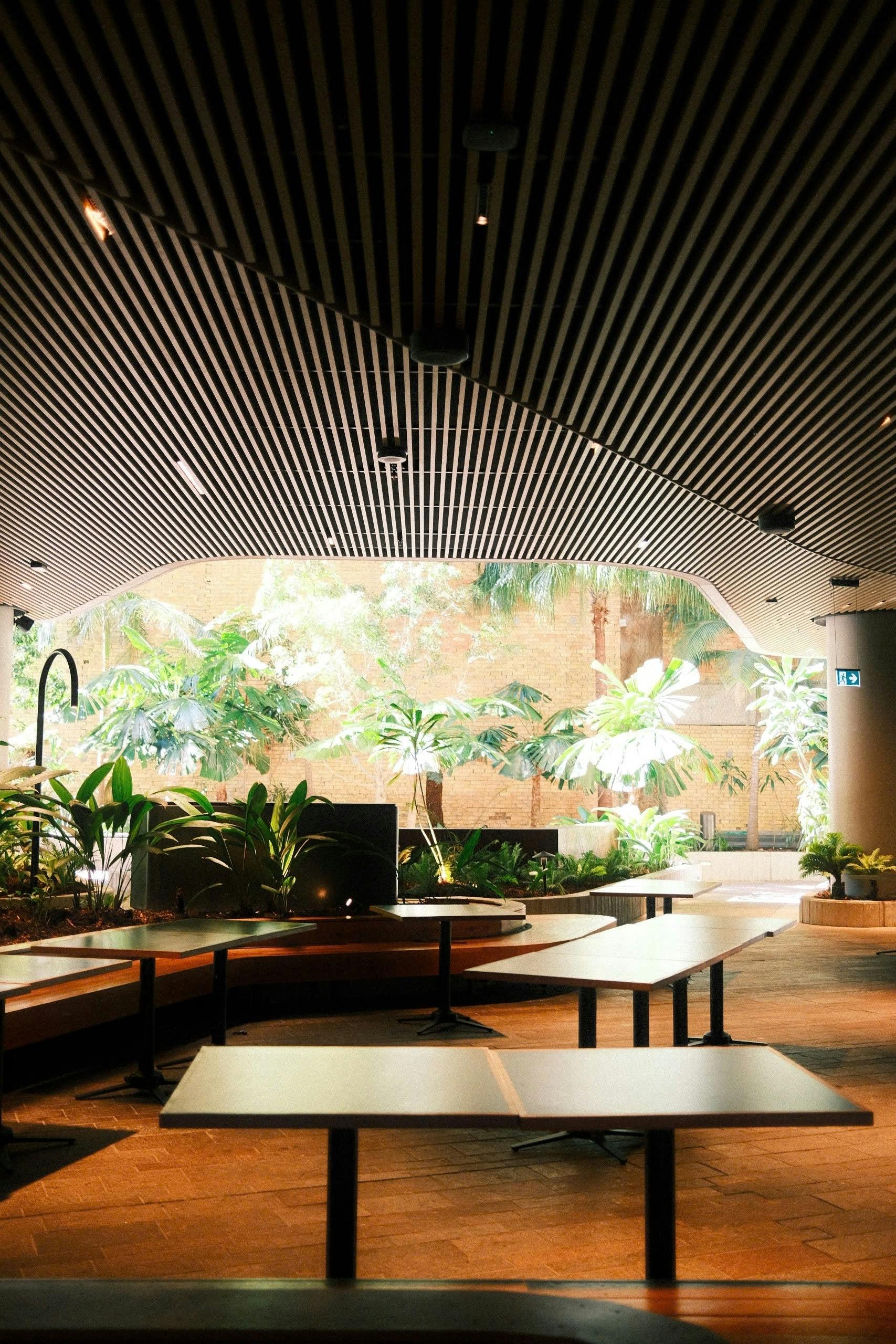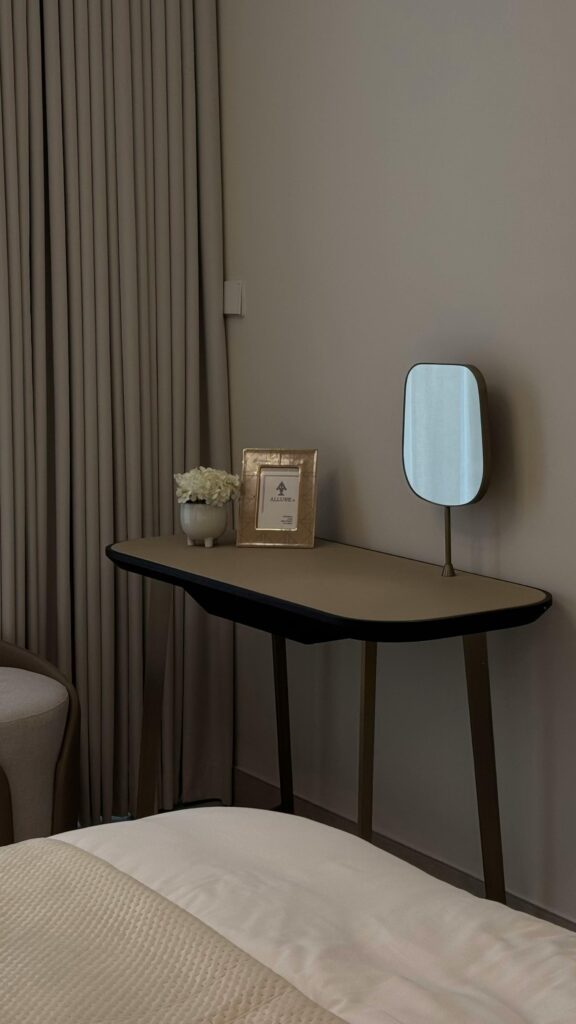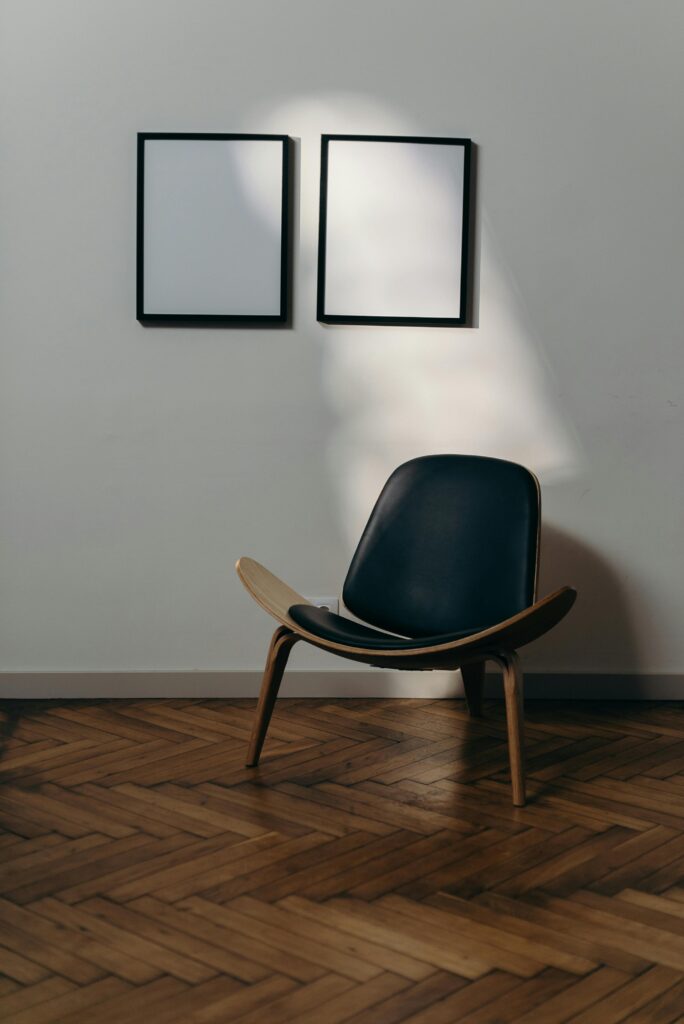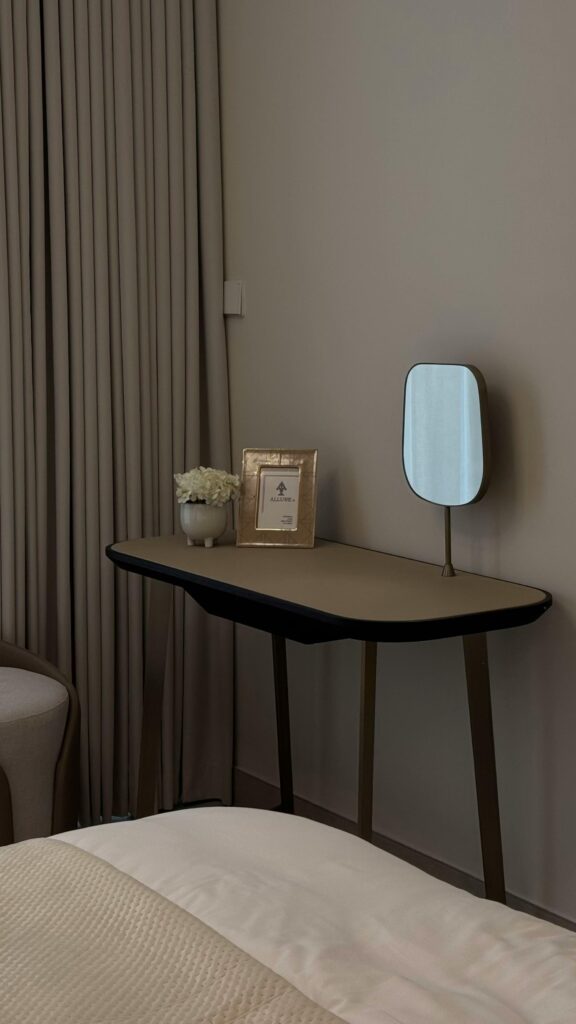The corporate workspace as we know it is experiencing a revolution. In Dubai’s bustling business districts, companies are discovering that the traditional sterile office environment is not just uninspiring – it’s potentially damaging to employee wellbeing and productivity. As 2025 unfolds, biophilic office interior design has emerged as the solution that forward-thinking businesses are embracing to transform their commercial spaces. This nature-inspired approach goes beyond adding a few plants to the reception area; it represents a fundamental shift toward creating workspaces that honor our innate connection to the natural world while addressing the unique challenges of Dubai’s desert climate.

This Photo was taken by Thuyen Vu.
Understanding biophilic design’s impact on modern workspaces
Biophilic design represents more than an aesthetic choice – it’s a scientifically-backed approach to creating environments that support human health and performance. The term “biophilia,” coined by biologist Edward O. Wilson, describes our innate affinity for nature and living systems. In commercial interior design, this translates to incorporating natural elements, patterns, and processes that reduce stress, enhance creativity, and improve overall workplace satisfaction.
Recent studies from 2024 reveal compelling data about biophilic design’s impact on workplace performance. Research conducted by Harvard School of Public Health found that employees in offices with natural elements showed a 15% increase in creativity and a 25% improvement in comfort levels. These findings are particularly relevant for Dubai’s competitive business environment, where attracting and retaining top talent requires innovative workplace solutions.
| Biophilic Element | Productivity Increase | Stress Reduction | Employee Satisfaction |
|---|---|---|---|
| Living walls | 12% | 18% | 22% |
| Natural lighting | 16% | 15% | 20% |
| Water features | 8% | 25% | 19% |
| Natural materials | 10% | 12% | 17% |
The connection between nature and human wellbeing becomes even more critical in Dubai’s urban landscape. The city’s rapid development and indoor-centric lifestyle make biophilic design not just beneficial, but essential for maintaining psychological and physical health in commercial spaces.

This Photo was taken by Marta Dzedyshko.
Desert climate considerations for nature-inspired commercial interiors
Dubai’s unique desert environment presents both challenges and opportunities for biophilic office design. The extreme heat, intense sunlight, and arid conditions require specialized approaches that differ significantly from temperate climate solutions. Premier design specialists understand that successful biophilic implementation in Dubai must respect and work with these environmental realities rather than against them.
The desert climate actually offers inspiration for biophilic design elements that other regions cannot replicate. Native succulents, sand textures, and earth tones provide authentic connections to the local ecosystem while requiring minimal maintenance. Smart designers are incorporating drought-resistant plant species that thrive in controlled indoor environments, creating lush green spaces that remain sustainable year-round.
Temperature control becomes a crucial consideration when introducing living elements into Dubai offices. Advanced HVAC systems must maintain optimal conditions for both human comfort and plant health, often requiring sophisticated zone control and humidity management. This technical complexity demands collaboration between biophilic design specialists and mechanical engineering experts to ensure long-term success.
Adapting plant selection for optimal workplace performance
Selecting appropriate vegetation for Dubai’s commercial interiors requires deep understanding of both botanical science and local climate conditions. Plants must not only survive but thrive in air-conditioned environments while contributing to air purification and aesthetic appeal. Species like snake plants, ZZ plants, and peace lilies have proven particularly effective in Dubai office environments due to their low maintenance requirements and air-cleaning properties.
The psychology of plant selection also plays a vital role in workplace wellness. Research indicates that employees respond differently to various plant types, with larger leafed plants promoting feelings of calm and smaller, more structured plants enhancing focus and concentration. Strategic placement throughout the office can create distinct zones that support different work activities and mental states.

This Photo was taken by Claiton Conto.
Essential elements of wellness-focused workplace design
Creating truly wellness-focused commercial spaces requires integration of multiple biophilic elements that work synergistically to support employee health and performance. Natural lighting stands as perhaps the most critical component, influencing circadian rhythms, mood, and visual comfort. In Dubai’s intense sunlight environment, this means sophisticated daylight management through automated shading systems, light shelves, and carefully positioned windows that maximize beneficial natural light while minimizing glare and heat gain.
Air quality represents another fundamental aspect of wellness-focused design. Beyond traditional HVAC filtration, biophilic approaches incorporate living plants as natural air purifiers, water features for humidity control, and natural materials that don’t off-gas harmful chemicals. The combination creates an indoor environment that supports respiratory health and cognitive function.
Acoustic comfort often gets overlooked in traditional office design, but biophilic approaches address sound management through natural elements. Water features provide pleasant masking sounds, while strategic plant placement can absorb noise and create quieter zones. This approach to acoustic design supports concentration and reduces the stress associated with typical office noise pollution.
Integrating technology with natural elements
Modern biophilic office design successfully integrates cutting-edge technology with natural elements to create responsive, adaptive environments. Smart sensors monitor air quality, humidity, and light levels, automatically adjusting conditions to maintain optimal comfort and plant health. This technological infrastructure operates invisibly, ensuring that the natural aesthetic remains undisturbed while providing sophisticated environmental control.
Digital wellness tools complement physical biophilic elements by providing employees with real-time feedback about their environment and health metrics. Apps can remind workers to take breaks in designated biophilic zones, track exposure to natural light, and even provide guided mindfulness exercises inspired by natural elements within the office.

This Photo was taken by Antoni Shkraba Studio.
Material selection and sustainable practices
The foundation of effective biophilic design lies in thoughtful material selection that connects occupants to natural processes and textures. In Dubai’s commercial spaces, this means incorporating locally-sourced stone, responsibly-harvested wood, and natural fiber textiles that provide tactile connections to nature while supporting sustainability goals. These materials must withstand the demands of high-traffic commercial environments while maintaining their aesthetic and functional properties over time.
Sustainable practices extend beyond initial material selection to encompass the entire lifecycle of the interior space. Modular design approaches allow for future reconfiguration without waste, while durable natural materials age gracefully, developing patina that enhances rather than detracts from their appearance. This long-term perspective aligns with both environmental responsibility and economic efficiency.
Water conservation


